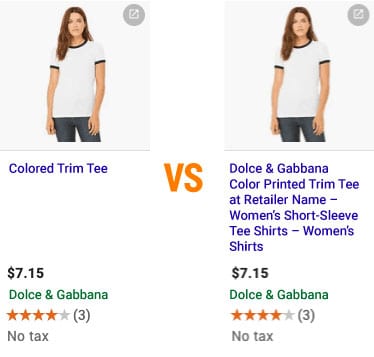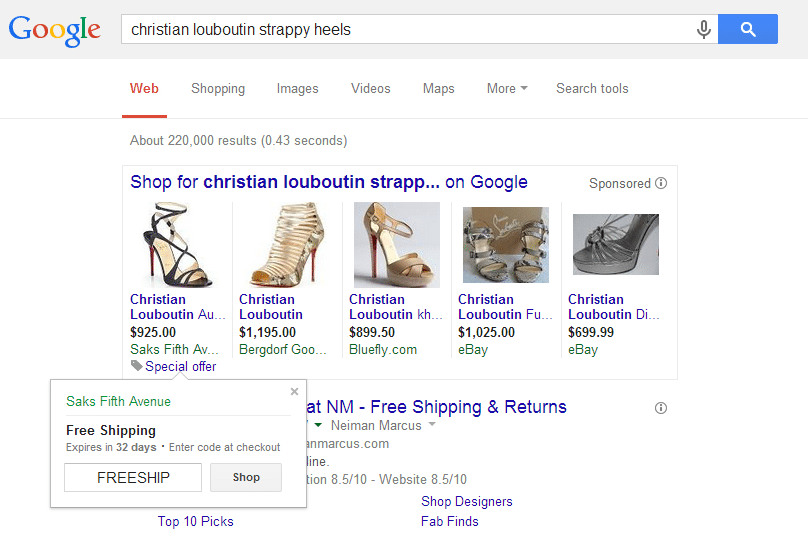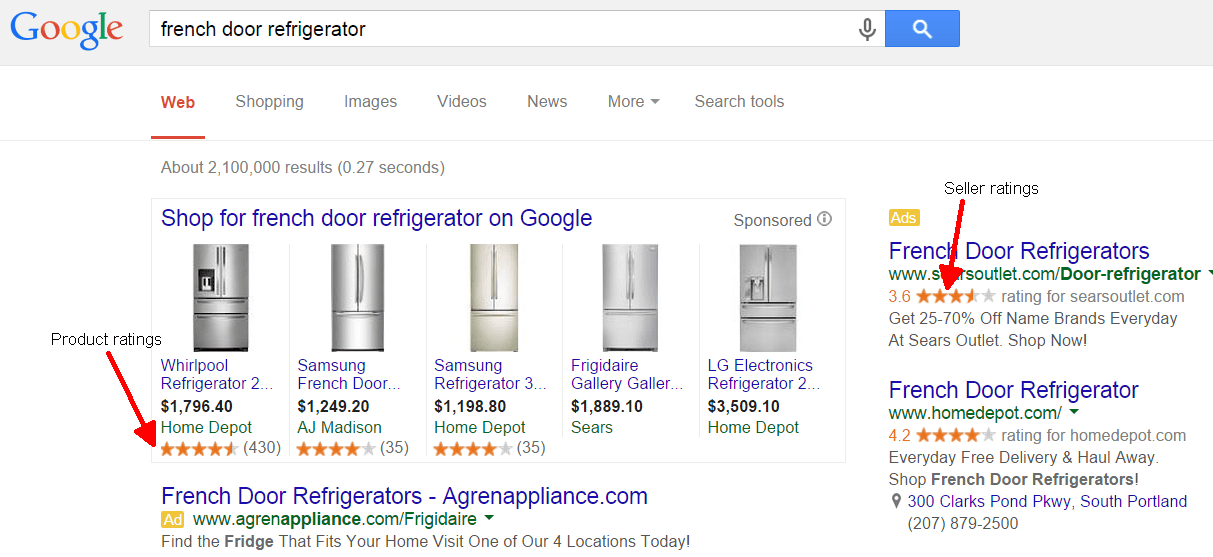Consumer convenience is one of the major factors that drive successful e-commerce businesses nowadays. If you advertise your products online effectively with the right tools, you can promote and drive sales, leads, and traffic that converts.
One such tool to reach your target customers effectively is Google Shopping Ads. It is one of the most effective tools to increase traffic and deliver a competitive edge over your peers to increase sales volume. This Google Shopping ads guide will help you uncover the different facets of a successful ads campaign.
Contents
- 1 What are Google Shopping ads?
- 2 Google Shopping Ad Advantages
- 3 How Does Google Shopping Work?
- 4 How to Create a Profitable Google Shopping Ad?
- 4.1 1. Make Product Photos and Listings up to the mark.
- 4.2 2. Make sure your store compiles all requirements & Policies for Google shopping ads.
- 4.3 3. Create and Set up Your Google Merchant Center Account
- 4.4 4. Create your Product Feeds
- 4.5 5. Link Merchant Center Account to Google Ads
- 4.6 6. Google Shopping Campaign Settings
- 4.7 7. Google shopping ads are live now
- 5 Top Google Shopping Ads strategies to get more sales
- 5.1 1. Optimize Your Product Titles
- 5.2 2. Optimize Your Product Feed Descriptions & Categories
- 5.3 3. Optimizing Your Product Images
- 5.4 4. Use Google Shopping Ad Extensions
- 5.5 5. Use Products Rating & Review
- 5.6 6. Implement a Negative Keywords strategy
- 5.7 7. Adjust Bids By Device Performance
- 5.8 8. Optimize by Geo Location
- 5.9 9. Increase bids For High-Performance Products
- 5.10 10. Create Remarketing Lists for Shopping Ads
- 6 Conclusion
What are Google Shopping ads?
Google Shopping Ads is a service offered by Google that allows merchants and sellers to increase the visibility of their products to the right customers to boost sales. It was launched in 2002 as a standalone feature but later on, became a paid model.
It has a proven record of generating high conversion rates for online retailers and e-commerce businesses. This makes it an ideal platform for online retailers trying to foray into this highly competitive market segment.
It displays a rich search result that uses a comparison shopping engine and shows a thumbnail image of the product along with the product titles, prices, reviews, retailer name, and shipping costs, etc. It assists the customer to take an informed decision by making use of the product comparisons and shop across different retailers.
These Ads are visible on the shopping tabs, on websites of search partners, smartphone apps, and YouTube as well.
Google Shopping Ad Advantages
Online shopping is popular nowadays and Google Shopping Ads can help leverage your businesses with smart shopping campaigns. The reason why many brands and online retailers are using them is better product visibility and high conversion rates.
There are several advantages of Google Shopping Ads over paid ads. Some of the main advantages are discussed below
a) Displays the Google Search Results at the Top
Advertising with Google Shopping Ads allows your products to get displayed at the very top of the search results. This offers a great opportunity for your business by offering the right products to potential customers based on their search query or their specific requirements.
b) Visual Display of Products over Description
Google Shopping Ads display your product image along with relevant product details and add a visual touch to the customer shopping experience. The product comparisons and general reviews help them to choose the right product of their choice with a mouse click.
c) Intent over Interruption
Most Google Ads are interruption-based, unlike Google Shopping Ads which have a proven higher conversion rate than other paid ads. This is because Google Shopping Ads are intent-based and rely on customer-centric requirements that pull up the relevant product feed.
They are actively looking for a solution. In this case, to display the most relevant products based on the customer search query.
d) Convenience for Potential Customers
Besides displaying the relevant product details, Google Shopping Ads displays different product alternatives along with the prices, overall product reviews, sellers, and the product image.
This makes the sellers reach potential customers who already know what they are looking for. For them, it is an easy way to find the right products in just a few mouse clicks.
e) Higher Conversion Rate
With mobile e-commerce activity continuing to grow exponentially, product placement becomes a top priority to drive businesses. With relevant products displaced at the top of the search pages, shoppers are more likely to click on them rather than scroll and check the other paid ads.
With more click-through rates, it is more likely to generate better revenues and faster returns on investment for businesses than traditional ads.
f) Simple and Easy Set-up
Unlike other paid ads that focus on keywords, Google pulls up the relevant products from your product feed based on search queries.
Thus, it becomes simple to identify which products to highlight and optimize to trigger your ads.
How Does Google Shopping Work?
A Google Shopping Ad has the following main components – the product title, the price, the product image, and the seller. These details are pulled up from a database of products maintained by Google called the ‘product feed’ which is specific to the seller.
The seller has access to his product feed through his Google Merchant Center account. This account is linked to the seller’s Google Ads account where he runs his shopping campaign.
Google then processes these data and shows the product that matches the relevant search queries by the customers and in creating the ads.
So, to get started the seller needs to create and link these two accounts – firstly, the Google Merchant Center Account where he maintains the attributes of the products to be sold. And secondly, the Google AdWords account from where he will set his budgets, manage bids, and optimize his ad campaigns based on the insights from Google Ads.
How to Create a Profitable Google Shopping Ad?
Creating a profitable shopping ad campaign is the primary objective of any e-commerce business. Therefore, the optimization of key product attributes is crucial such that relevant products are shown for customer-specific keywords.
This Google shopping ads guide will give you some of the important points that need to be considered for creating a profitable shopping campaign.
1. Make Product Photos and Listings up to the mark.
Product photos are vital for shopping ad campaigns and one needs to make sure that they use high-resolution images. Cropping the images to highlight the important features and using the recommended settings will influence the number of clicks.
Also, add different angles of the product including the details, seller name, material, color, and form. This will improve your chances of getting your ad ranked higher than your peers.
2. Make sure your store compiles all requirements & Policies for Google shopping ads.
Your Google Shopping ads should meet Google compliance and policy requirements. Google is very strict with regards to counterfeit items, hazardous products, and products that may harm or endanger wildlife or animals and such products should be avoided at all costs.
3. Create and Set up Your Google Merchant Center Account
Before setting up your Merchant Center Account make sure that you own your site and verify it using the Merchant account by logging into your domain registrar and granting access to access to Google.
You also need to set up your tax and shipping information in the Merchant Center Account, so a thorough knowledge of the tax and shipping charges of your local area is a must.
4. Create your Product Feeds
Creating your Product feed is important as it specifies all your products and displays them when customers’ search query matches your product attributes.
It includes the country of origin, language, and product information like product title, description, image, availability, price and brand name, etc. You can use the in-built Google sheets to input these data.
5. Link Merchant Center Account to Google Ads
Once you create your Merchant Center Account, link it with your Google Ads account to initiate the ad campaign. Merchant Center Account stores your product details, while Google Ads account lets your customer see your products in Google through an ad campaign.
So, linking these accounts will allow your products to be displayed in front of your potential customers.
6. Google Shopping Campaign Settings
By choosing a shopping campaign you will be able to advertise your products and take advantage of its services. Planning and executing a Shopping Campaign strategy depends on several factors.
The most important being optimizing the content of the product feed and managing search queries by setting up multiple campaigns for large product groups. Some of the critical campaign setting areas that need focus are discussed below
i. Country of Sale
It is the country of origin where you are selling your products online. Certain rules and regulations need to be taken into account while dealing with some product categories as per local government norms.
Be careful while creating Merchant ID and Country of sale as these settings cannot be changed later during the ad campaign.
ii. Inventory Filter
Inventory filters can be used to highlight products that are performing well from the ones that are not generating revenues. This helps you in optimizing your product feed for better returns.
iii. Bidding
Bidding helps to determine your cost-per-click (CPC) i.e. the maximum limit that one is willing to get paid from a click on their ads. You can maximize your returns on investment by adjusting the bid on your Google Ads account after creating your ad campaign.
iv. Daily Budget
You can set your daily budget by estimating the amount you are willing to spend daily on your ad campaign. This can act as a performance indicator by monitoring your account and checking your returns after applying a daily budget in a month.
You can also use the budget forecasting tool to set your daily ad budget and optimize it as the days go by.
v. Campaign Priority
For merchants availing multiple ad campaigns, they can opt for the Campaign Priority settings to change the priority for each ad by specifying the priority levels for selling their product categories. This helps in maximizing their returns on investments.
vi. Networks and Devices
Displaying your ad campaign to various networks of partners and through which electronic devices are possible through this setting. It helps to optimize the ads to be showcased to specific groups of people and devices like laptops, tablets, PCs, smartphones, etc.
vii. Locations & Local Inventory Ads
You can display your ads or remove them based on their performance concerning specific locations using this setting. Ads for products sold in local retail outlets can also be displayed with the help of this setting.
7. Google shopping ads are live now
Once you set up your delivery options and specify your campaign URL links, return policy, and terms and condition links, your ads will go live. You should get the best out of this wonderful platform in making your products more visible to your potential customers.
Top Google Shopping Ads strategies to get more sales
Maximizing your profit is the key for every business to survive in this tech-savvy online shopping arena. And with Google Shopping Ad, you need time and strategy to optimize your shopping campaigns. Below are some strategies to get more sales from your online ads.
1. Optimize Your Product Titles
Product Title optimization is an essential part of shopping campaign strategies. Google can easily spot your products based on search queries if titles are optimized.
Make sure to use both long-tail keywords and primary keywords to have a better chance of fulfilling the Google search requirements.

Image Source: adlucent
2. Optimize Your Product Feed Descriptions & Categories
To match the search queries of the customers, it is imperative to break down multiple products into subcategories and subgroups with respective product attributes to leverage the usage of categories.
3. Optimizing Your Product Images
Make sure to include images that are accurate, descriptive, and relevant to your products. Include images by capturing the product at every angle. This will increase the chances of your conversion rates as it will position the products in the spotlight.
4. Use Google Shopping Ad Extensions
Ad extensions help to highlight the products based on their attributes like discounts on its price, free shipping, and offers. Once the extensions are set, Google Shopping will pull up this useful information and feed the potential customers.

Image source: wordstream
5. Use Products Rating & Review
One of the main elements in Google Shopping Ad that draws most customers is the user-submitted ratings and reviews. This is a handy tool for customers to check the best available options and forms direct social proof that may end up in making or breaking the deal. So, the idea is to increase your product reviews and rating to sell your products more effectively.
Reviews and recommendations are of utmost importance in the world of an e-commerce business. Featuring reviews for each product will impact the brand image as customers seek honest recommendations and reviews for the products they are buying online.

Image source: search engine land
6. Implement a Negative Keywords strategy
A negative keyword list is useful when segregating the products based on their priorities. This allows products that are to be shown and avoided while running an ad campaign.
This helps to engage in more intent-based products rather than generic ones. Such keywords will make sure that you are not paying for your ads unnecessarily for somebody who is not interested in your product.
For instance, a merchant who is selling ‘Nike Shoes’ might choose to include ‘Adidas Shoes’ as a negative keyword. This will make sure that people who Google ‘Adidas shoes’ won’t be able to see it.
7. Adjust Bids By Device Performance
You can optimize your product bids based on the type of devices customers have used while searching for them. You can increase your bids if the traffic is high for particular devices like mobile handsets, and alternatively, you can reduce bids for products that are not performing well.
8. Optimize by Geo Location
You can also optimize your Google Ad campaign based on location. Products not doing good in some areas can be filtered so that you do not waste your resources on people from a particular location.
You can research the customer choices and preferences based on a location and optimize your campaign based on this data for generating more sales.
9. Increase bids For High-Performance Products
For products with high traffic and performance, you can increase the bid to increase your return on investment. Also, note that high bids result in a reduction of traffic so you need to optimize such that you increase your overall conversion.
10. Create Remarketing Lists for Shopping Ads
Remarketing is a cost-effective tool that generates high returns on investment. Remarketing strategizes your engagement with your customers that bought your products from your store.
You can adjust your bids for existing customers and potential customers separately based on earlier engagement patterns. Remarketing strategies will help you leverage the most out of it by segmenting your target audiences based on their shopping patterns.
Thus, when the same customer searches in Google for a similar product purchased in the past, your shopping ads have a higher chance of enticing him to purchase it again.
Conclusion
To increase your sales volume, Google Shopping Ads are a must-have for online businesses. One of the merits of using it is that the results are displayed on top of the search results along with the key product attributes. They are more likely to be clicked by potential customers thereby increasing your chances of a better conversion rate.
Just like visiting an offline store, it enables you to present your products with the right attributes in front of the customers. It boosts the traffic leading to your website thereby helping you achieve your sales target. You can optimize your shopping campaign in such a way as to reach out to a targeted audience with the right intent.
It is the best online platform for online retailers to maximize their returns on investments. One needs to deploy the right attributes and relevant product details to the potential customers who are looking for an easy purchase.
Finally, it helps you increase your brand value and increase sales while leveraging your optimization skills. The idea is to stay relevant and updated in analyzing customer preferences and choices and delivering their needs from time to time.
Utilizing this article on ‘The Ultimate Guide to Google Shopping Ads’ will be able to help start a profitable campaign for your business.

